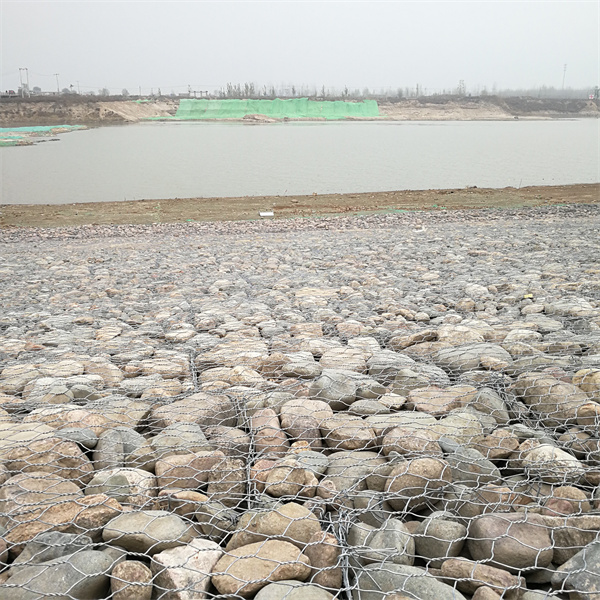Samh . 18, 2024 10:23 Back to list
china gabion baskets
Exploring the Applications and Benefits of China Gabion Baskets
Gabion baskets have emerged as a popular solution in various construction and landscaping projects, particularly in China. These wire mesh containers, filled with stones, rocks, or other materials, are designed to create stable structures for various purposes, including erosion control, retaining walls, and decorative landscaping. This article explores the unique characteristics, applications, and benefits of gabion baskets, emphasizing their relevance in the rapidly developing infrastructure landscape of China.
What are Gabion Baskets?
Gabion baskets are essentially cages made from double-twisted steel wire mesh, commonly filled with natural stones or other materials. The size and shape of these baskets can vary, allowing for customized solutions depending on the desired application. Gabion walls are typically used for applications such as soil retention, slope stabilization, and riverbank protection, making them highly versatile and effective in addressing numerous engineering challenges.
Applications of Gabion Baskets
1. Erosion Control One of the primary uses of gabion baskets in China is to combat soil erosion. In regions where heavy rains or floods could potentially wash away soil, gabion structures can effectively slow down water flow and stabilize the soil. The fill material's weight and the mesh's structure help hold back soil, preventing loss and providing a habitat for plants, further enhancing soil stability.
2. Retaining Walls Gabion baskets are often employed in creating retaining walls. Their flexibility in design enables engineers and architects to construct walls that can accommodate shifts in soil movement or changes in pressure. The permeability of gabions allows for natural drainage, reducing the risk of pressure buildup behind solid walls, thereby preventing potential structural failures.
3. Riverbank and Coastal Protection China, being home to numerous rivers and extensive coastlines, has increasingly turned to gabion baskets for flood and coastal protection. The baskets can absorb and dissipate energy from waves or flowing water, reducing erosion along riverbanks and shorelines. This helps safeguard infrastructure and preserves the ecological balance of these environments.
china gabion baskets

4. Landscaping and Aesthetic Design Beyond their structural benefits, gabion baskets are also used in landscaping projects to create beautiful and functional designs. They can be constructed into decorative barriers, seating elements, or planters, enhancing the aesthetic appeal of public spaces, parks, and gardens.
Benefits of Gabion Baskets
1. Cost-Effectiveness Gabion baskets are generally more affordable than traditional concrete solutions. Their materials can often be sourced locally, reducing transportation costs and minimizing environmental impacts.
2. Durability and Longevity Made from corrosion-resistant materials, gabion baskets offer a long lifespan and require minimal maintenance. This durability makes them suitable for various environments, including coastal and industrial areas.
3. Sustainability The use of natural materials for filling, such as recycled stones or local aggregates, aligns with sustainable construction practices. Furthermore, the mesh allows for vegetation to grow, promoting biodiversity and integrating the structures into the surrounding environment.
4. Ease of Installation Gabion baskets are relatively easy to transport and assemble on-site. Their modular design allows for quick installation, making them an efficient choice for urgent projects, such as disaster relief efforts in flood-prone areas.
Conclusion
In conclusion, gabion baskets represent a versatile and effective solution for a range of engineering and landscaping challenges in China. With their durability, cost-effectiveness, and aesthetic appeal, they are increasingly being adopted across various sectors. As construction practices evolve and the need for sustainable solutions grows, gabion baskets will likely continue to play a pivotal role in shaping the infrastructure landscape in China and beyond.
-
Visualizing Gabion 3D Integration in Urban Landscapes with Rendering
NewsJul.23,2025
-
The Design and Sustainability of Gabion Wire Mesh Panels
NewsJul.23,2025
-
The Acoustic Performance of Gabion Sound Barriers in Urban Environments
NewsJul.23,2025
-
Mastering the Installation of Galvanized Gabion Structures
NewsJul.23,2025
-
Gabion Boxes: Pioneering Sustainable Infrastructure Across the Globe
NewsJul.23,2025
-
Custom PVC Coated Gabion Boxes for Aesthetic Excellence
NewsJul.23,2025
-
Installation Tips for Gabion Wire Baskets in Erosion Control Projects
NewsJul.21,2025






